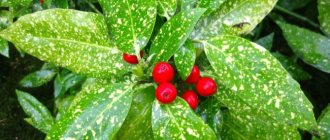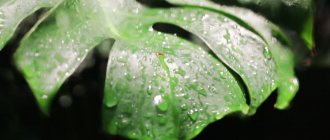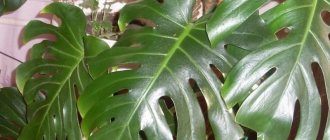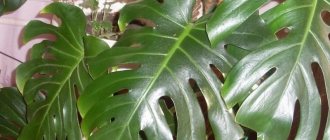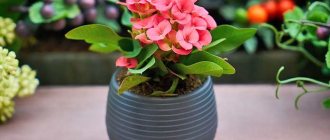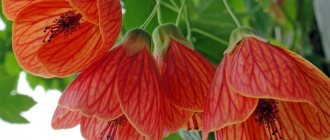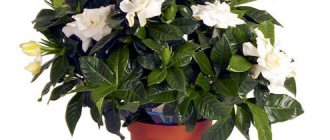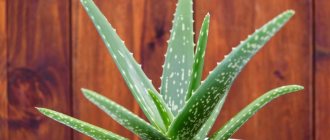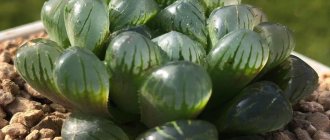Flowers, grass and shrubs with the scent of lemon: names, descriptions and photos
The aroma of lemon, fresh and juicy, lifts your spirits, gives you a feeling of vivacity and with its bright energy reminds you of summer.
Unfortunately, the lemon tree is difficult to grow in Russian latitudes, but there are plants with a similar smell that easily take root in cold soil and have a lot of useful properties.
We'll tell you about the most interesting plants with the scent of lemon, show them photos and tell you how they can be used.
The world of plant scents
A viscous, lethargic smell comes from burdocks, and a piercingly pungent smell from nettles, mixed with a sweet perfume, unusually subtle, like perfume spilled somewhere, from apples.I. S. Shmelev. Summer of the Lord The flowers of Korean abelia smell like fragrant tobacco.
In hot weather, when rubbed, the leaves of chistets develop a melon aroma.
Actinidia kolomikta flowers resemble lily of the valley in smell.
Among catnip seedlings there are often plants with the smell of kerosene or mushroom soup.
We invite you to familiarize yourself with the Construction of a bathhouse from sleepers with your own hands from the foundation to the roof
Creeping thyme or thyme may smell like pure thymol.
The leaves of plum birch have a strong odor of methyl salicylate (methyl ester of salicylic acid).
Borago flowers have a cucumber scent.
The leaves of snakehead and lemon balm (right) smell like lemon.
The flowers of pear (left) and Manchurian kirkazona taste like rotten meat.
Meadowsweet has a specific “medicinal” smell.
One of the most unpleasant smells comes from black cohosh (left) and flowering quince.
The common spring grass (left) and spadefoot spadefoot smell like garlic.
The black root smells “fragrant” of mice.
Many plants have a strong aroma, especially during flowering. In one of the parks in France there is a mixborder (an elongated flower bed) about a kilometer long, made up of perennial, strong-smelling plant species. In total, there are about 3,000 aromatic plants in the world, the smell of which is imparted by essential oils, coumarins, organic acids and their esters.
The strength of odors varies from plant to plant and in most cases depends on the amount and composition of the essential oil. So, in order to smell lilies of the valley, even when they grow in a large group, you need to almost bury your nose in them, and two or three violet bushes remind you of themselves from a distance of two or three meters.
One of the most fragrant perennial plants in central Russia is Korean abelia. It is named after the English physician, botanist and zoologist Clark Abel (1780-1826). The inconspicuous flowers of abelia smell of fragrant tobacco. In hot, windy weather, this smell can be felt at a distance of 300 meters from the plant.
Nature has generously gifted citrus bergamia, or bergamot, with essential oils. From its fruits, bergamot oil is obtained, familiar to everyone from the smell of Earl Gray tea: from the leaves - petitgrain oil with a strong fruity-candy aroma with woody-herbal undertones, and from the flowers - neroli essential oil with a refreshing, spicy aroma and sweetish floral-herbal notes .
The term “essential oils” appeared in the 18th century. They received the name “oils” for their external resemblance to real liquid oils, and the epithet “essential” - due to their volatility and ability to distill with water vapor.
Chemically, essential oils are liquid mixtures of volatile organic compounds with a predominance of one or more components; they are produced by plants and determine their smell. A mixture can consist of a large number of components with different chemical structures, which, having their own aroma and being in a very specific relationship with each other, form an odor characteristic of a given species.
Plants have different abilities to produce essential oils, and those that produce a sufficiently large amount of them are called essential oils and are often used to obtain essential oils in their pure form. But there are many plants with much more modest abilities that nevertheless have a pleasant and sometimes delightful smell.
Essential oils are formed in all parts of plants, but their quantity in different organs is not the same. Most of all - in leaves, less - in fruits and flowers. And very rarely they are found in rhizomes, such as calamus or German iris, which perfumers call “orris root” because of their smell.
The biological significance of essential oils for the plant organism has not yet been fully established. There is no doubt that they attract certain types of insects that pollinate flowers, or repel animals that want to eat them. At the same time, there are several hypotheses according to which essential oils are active participants in metabolic processes and, having antimicrobial, antiviral, and antifungal effects, protect plants from diseases.
The qualitative composition of an essential oil can be similar in completely different plants belonging to different botanical families. At the same time, it can change beyond recognition depending on changes occurring in the environment. Among such plants is Byzantine chist. On cool days, it has a light spicy-resinous aroma, characteristic of many representatives of the Lamiaceae family, and on hot days, the silvery-felt, woolly leaves of the chistets smell strongly of melon when rubbed.
We invite you to check out the Mini-garden in a pot - creating magic in miniature
In addition to the carnations themselves, the flowers of the hybrid plant, which appear immediately after the snow melts, smell like carnations, but not so strongly. Lily of the valley - in addition to the lily of the valley itself - is Actinidia kolomikta, especially its male flowers. Tea rose - Camellia sinensis. Rosehip flowers are the cut rhizome of Rhodiola rosea, for which this plant received its specific name. The yellow, inconspicuous flowers of Rhodiola have almost no smell.
Not only cucumbers have a cucumber smell. Borage, or borage, comfrey, meadowsweet and small burnet also smell.
The leaves of lemon balm, Moldavian dragonhead, several types of catnip, one type of wormwood and lemongrass smell like lemon. But catnip, which is also called lemon catnip, often does not live up to its name. When propagated by seeds, it produces a variety of forms that smell differently.
Lemon scent is the rarest of them all. Much more often among catnip seedlings there are plants with the smell of kerosene or mushroom soup. The smells of common thyme and creeping thyme, or thyme, are just as different. Thyme may have a sweet smell, familiar to many from the cough medicine “Pertussin,” or it may smell like pure thymol (the smell of a dentist’s office, where thymol is used to disinfect the tooth cavity before filling) or even allspice.
Two very similar plants of the Asteraceae family differ not only in inflorescences, but also in aroma - balsam tansy and balsam yarrow. The subtle and at the same time complex aroma of balsam tansy leaves is completely different from the aroma of balsamic yarrow leaves, which is dominated by the pungent smell of medicinal camphor.
A specific “medicinal” smell, well known from ointments that are used for joint pain, is given to plants by methyl salicylate, which belongs to the class of esters. It is found in many plants, in particular in all parts of the meadowsweet. But the strongest smell of this natural substance comes from plum birch, a tree native to North America.
The attractive fresh smell of hay comes from coumarins, which are quite common in the plant world - heterocyclic compounds derivatives of benzo-α-pyrone. For the first time, these compounds were isolated from thin beans - the fruits of the tropical plant Dipteryx aromatica, which contain so much of them that when dried, coumarins are released on the surface of the fruit in the form of crystals with a strong sweetish aroma, reminiscent of both vanilla and nutmeg.
Coumarins are involved in the formation of attractive odors of hawthorn, serviceberry, sea buckthorn, black currant, apple, pear, raspberry, blueberry, cloudberry, as well as sweet clover, lingonberry, blueberry and blueberry leaves, and angelica officinalis roots. All herbs containing coumarins smell stronger when dried.
A wide variety of organic substances, amino acids, organic sulfur compounds, etc., give plants a smell that can hardly be called pleasant. Flowering pears, mountain ash and Manchurian kirkazon taste like rotten meat. Its flowers are shaped like a saxophone. At the constriction in the pharynx there are sharp hairs directed downwards.
The stamens are located at the top, near the peduncle. An insect that gets into a flower cannot get out until the anthers ripen. The pollen that spills out from them accumulates at the “bottom” of the flower, completely enveloping the fly. After this, the hairs of the fly are sent to the next flower. To further attract flies that prefer meat food, the flowers of the Manchurian Kirkazon are painted in a “meat” color, but in the large-leaved Kirkazon they are yellow and smell like freshly caught fish, this probably attracts insects with such taste inclinations.
The smell of herring brine is imparted by trimethylamine to the flowers of most hawthorn species. Only the double, pink hawthorn flowers do not smell. All the others have a strong “aroma”, unpleasant to people, but very attractive to flower pollinators. The smell of barberry flowers cannot be called attractive, suggesting an unwashed floor rag or rotten potatoes.
We invite you to familiarize yourself with Green walnuts: beneficial properties and harm, jam and vodka tincture
But the most unpleasant smell comes from the beautiful ornamental plant black cohosh. During flowering, the plant synthesizes sulfur-containing compounds mercaptans - this is the reason that you can’t stand near the bush for a long time: it smells like fresh feces. The smell is especially strong indoors, so black cohosh should not be used in bouquets. The blooming common quince has exactly the same aroma, but it is felt only if you smell the flower.
Two more plants belonging to completely different families smell very unpleasant: hemlock and blackroot. Due to the alkaloids they contain, both smell like mice. This smell allows you to distinguish hemlock from numerous medicinal and edible plants from the Umbelliferae family, which is very important because hemlock is deadly poisonous.
Sulfur-containing thiosulfinates give garlic and onions their specific odor. These same substances, but in much smaller quantities, give the smell of plants from the cruciferous family. Field grass and spadefoot, which even got its name because of its slightly spicy, garlicky taste and aroma, smell like garlic.
Autumn has come. When planting certain plants in your garden, imagine not only how they will look in a few years, but also what aroma you will enjoy - after all, the world of plant odors is so diverse.
Photo by Natalia Zamyatina and Igor Konstantinov.
Indoor flowers with lemon scent: names, descriptions and photos
Geranium (Pelargonium graveolens)
A plant with small pink or purple flowers. The leaves are carved, reminiscent of grapes, covered with tiny fibers on both sides. The plant can reach a height of over one meter.
Geranium has antiseptic properties, kills bacteria in the air and absorbs odors, which is why this plant has found a place in the kitchen.
We invite you to watch a video about fragrant geranium:
Murraya
An evergreen tree reaching a height of 1.5 meters at home. The leaves are dark green in color with a distinct citrus flavor and smell. A distinctive feature of the plant is the simultaneous appearance of delicate white flowers of small size and red elongated berries, similar in appearance to rose hips.
We invite you to watch a video about the muraya plant:
Plectranthus aromaticum or spur flower
A perennial herbaceous plant with fleshy, rounded leaves covered with hairs. White, lilac and violet bell-shaped flowers of the spur flower are collected in multi-flowered inflorescences. At home it reaches 80 centimeters in height .
Medicinal infusions from aromatic plectranthus:
Spicy and medicinal herbs whose leaves smell like citrus
Melissa officinalis
Grown in Europe and North America . A perennial herbaceous plant with oval leaves with toothed ends and a relief structure. The inflorescence consists of several small corollas with white or bluish petals.
Consuming lemon balm is beneficial for women's health:
We invite you to watch a video about lemon balm:
Cat mint
Distributed in central Russia, Southern and Central Europe, the North Caucasus, the Far East and the USA.
The plant is used in the veterinary field , to prevent the appearance of worms in animals, and also as a sedative for cats.
We invite you to watch a video about catnip:
Moldavian snakehead
It grows in most of Eurasia and North America in temperate climates. A herbaceous plant with small elongated leaves with serrated edges. The purple flowers form a racemose inflorescence . The snakehead grows up to 80 centimeters.
Lemon scent
Lemon and the less common lime have healing properties.
They help a person fight colds and flu, vitamin deficiency, protect blood vessels, tone the body, and have bactericidal, antiseptic and antiviral properties. Lime and lemon juice are a storehouse of vitamin C and an excellent remedy for boosting immunity. Nowadays, lemons can be bought in almost any store all year round. Limes are available only to city residents; they are simply not delivered to village shops.
These citrus fruits are three times smaller than lemons, they have a slightly different, milder taste, thin skin, greenish color, juicier pulp, and no seeds, which is why it is probably so rare to find a charming lime tree in amateur winter gardens.
Unlike lemon, lime does not give dishes a sour taste; rather, it makes the taste more refined. And its lemon aroma has some piquant bitterness.
Alas, in ancient times citrus fruits were not available to the common people, but the poorest peasant was familiar with the lemon aroma. It’s just that two herbs have long been grown in village gardens - Moldavian snakehead and catnip. Both plants have a strong lemon aroma, and tea with these herbs helps cope with colds, strengthens the immune system, and relieves headaches.
Catnip is a cold-resistant and light-loving perennial plant that grows well in soils that are light in mechanical composition, fairly fertile and weed-free. Propagated by sowing seeds in the ground in early spring or before winter, seedlings and annual seedlings. Before sowing, the soil is rolled and well moistened. Read more about this culture here:
Catnip
And snakehead is a heat-loving crop, so it is grown as an annual. He needs light, warmth, fertile neutral soil reaction. It is advisable to grow in seedlings, planting in the ground after the end of spring frosts. By the way, for fresh consumption it is better to collect the leaves on a hot afternoon, when they exude the strongest lemon aroma. Read more about it here:
Snakehead
Lemon grass is widely used in Asian cuisine. This is none other than cymbopogon, a spicy aromatic plant originating from India. The lower part of the plant stem does have a distinct lemon peel aroma.
Since this is the easiest plant to grow with such an aroma, in southern countries it is from it that lemon oil is made for perfumery needs. Adding lemongrass to fish and seafood dishes adds a sophisticated flavor without adding harshness. This herb is included in curries, Asian sauces and pastes that are popular today.
Lemon grass is harvested in dried form and is often added to tea and cold drinks in winter.
In the conditions of central Russia, cymbopogon can be grown as an annual plant or a potted plant, with transfer to the windowsill for the winter. Sometimes he sells seeds, although mainly through his online store. I wrote more about this culture and the secrets of its cultivation here:
lemon grass
In addition to herbs with the aroma of lemon, in gardens you can find Japanese quince - chaenomeles. This wonderful plant is an amazing example of high decorative qualities and healthy fruits, which can compete with lemon in terms of vitamin C content. You can read about it here:
Chaenomeles
Shrubs
Wormwood "God's Tree" (Artemisia abrotanum)
Widely distributed throughout Russia, the European part, Siberia and the North Caucasus. Perennial subshrub, up to 150 centimeters high. The leaves are bluish-green, pressed underneath, covered with gray down. Small yellow flowers in small, drooping baskets are collected at the top of the stem and form a spreading paniculate inflorescence.
Decoctions of wormwood leaves are used for:
We invite you to watch a video about wormwood:
Callistemon lemon
Mostly distributed in Australia, in Russia it is grown at home. In the wild, the bush reaches 3 meters in height , has green, linear-lanceolate leaves, sharp at the top, up to 9 cm long and 1 cm wide. Flowers of unusual shape, reminiscent of “kitchen brushes” in red or pink. The leaves exude a bright lemon aroma.
Callistemon lemon has antibacterial properties and can disinfect indoor air.
We invite you to watch a video about Callistemon lemon:
Most plants, herbs and flowers that smell of lemon not only perfectly imitate the citrus smell, but are also a source of valuable natural trace elements. Their correct use will give a person beauty and health for a long time.
If you find an error, please select a piece of text and press Ctrl+Enter.
Source
Lemon geranium (pelargonium): features and care rules
Lemon geranium is a variety of fragrant pelargonium. This rather tall plant is distinguished by heart-shaped leaves with sharp tips and a strong citrus aroma. Most often it can be found on window sills in flowerpots or containers; at the slightest contact, this plant emits a persistent lemon smell and perfectly refreshes the air in the apartment.
Description
Lemon geranium is a bush about 70 centimeters high, however, its width is no more than 35 centimeters. The plant cannot boast of frequent and abundant flowering, however, it does not need this. The attractive appearance and delicate aroma of lemon is appreciated by many gardeners. Bright green, strong stems radiate from the woody base.
The leaves are very beautifully shaped, carved, curved, with a frame reminiscent of lace. Their shades can range from rich to light green, in some cases cream, burgundy and purple tones appear. If the geranium does bloom, which is often facilitated by proper care, it pleases its owner with small (about 2 centimeters) light flowers, growing both singly and in inflorescences.
Description of the geranium plant
Pelargonium is a species of the Geramiaceae family. Fragrant pelargonium is often called scented geranium. The confusion in names occurs because the plants have very similar foliage and are all identified as the same family. Geranium is a plant called Herb Robert, as well as cranes-bill because of the shape of the fruit's seed pod, or storks-bill for its resemblance to a bird's beak.
Lat. Geranium
Pelargonium leaves have a very distinctive appearance. They have beautiful, sometimes deep slits, and their curved shape sometimes resembles a ruffled frill. The color spectrum of their foliage is from light green to dark green, and the leaves of some species have cream, red and even purple colors. The plant reaches a height of 30 to 80 cm.
The geranium family of the genus Pelargonium has more than 200 species. Among them, the five most common types can be identified:
- decorative deciduous;
- ivy or balcony;
- fragrant;
- English, they are noble;
- zonal (standing).
You can also pay attention to the sixth type - these are succulent pelargoniums; they have fleshier stems and an original appearance, for which they are often used in ikebana and bonsai compositions.
Lemon geranium leaves are oblong, lush due to their dissection, and have a bright green color. With proper care, the plant grows up to half a meter in height, sometimes even higher. But it is believed that the decorative function is better performed by young geraniums while the plant trunks have not yet become lignified. This plant looks very fresh and tender
Lemon geranium got its name because of the aroma it exudes with every slightest touch. The fragrance of this plant is reminiscent of the fresh and sparkling smell of lemon.
Landing
Lemon geranium cannot be called a demanding plant. The best option for this indoor flower would be a spacious room with enough light. Experts talk about the beneficial properties of pelargonium, for example, its aroma can improve a person’s sleep, so its location in the bedroom will be an advantage. A flower would also come in handy in the kitchen, because it can cleanse the air of germs and rid the room of unpleasant odors.
If there are children in the room who suffer from allergic reactions, it is better not to place this plant in it.
Geranium can also be placed outside in the summer, however, in this case it must be protected from direct sunlight.
As for the planting procedure itself, the choice of container is important. The flowerpot should be quite voluminous, since the plant does not tolerate crowding and, if there is not enough space, it may simply die. In addition, you should follow lighting standards and choose the right soil.
Lighting and location
Geranium is a flower that loves light very much. However, placing it in partial shade and deep in the room will not be a particular problem either. In addition, if there is not enough lighting, this can be immediately understood by the appearance of the plant. The leaves will become much lighter, the plant will stretch in height. When these signs appear, lemon geranium should simply be placed in the sun once a day for several hours. Without enough light, pelargonium will not bloom.
As for the location, the east or west side of the house would be ideal. The best option is to place the flower on the windowsill.
However, it should be borne in mind that he is afraid of drafts, so they should be excluded as much as possible. Placing it near a radiator or under an air conditioner is also not a good idea.
Planting and caring for lemon balm
Place.
Melissa needs to be planted in an area that would be illuminated by the sun all day, and cold gusts of wind would not disturb the plant. Mint is a heat-loving crop. Before planting, the soil will have to be fertilized with humus or compost. To the bucket you need to add 2.5 cups of ash, a small spoon each of superphosphate and potassium sulfate. Mix the ingredients and distribute over the garden bed.
Reproduction.
Melissa is propagated by seeds, cuttings and dividing the bush. Seeds for seedlings are sown in mid-March. The seedlings are watered, protected from the cold and planted in open ground at the end of spring at a distance of 30 cm. To propagate, you need to divide the root in half with the tip of a shovel and transplant each section to a permanent place.
The soil
To make pelargonium feel comfortable, it is recommended to place it in a container with special soil. If it is not available, a universal option will do. You can either prepare the soil yourself or purchase it at a specialized retail outlet. Basic requirements: presence of a drainage layer, sufficient looseness, presence of mineral elements.
To make suitable soil yourself, you will need river sand, charcoal, humus, peat, and turf soil. All these components should be used in equal proportions. Another indicator that needs to be monitored is the acidity level. It should be around 6.5 pH.
The best option is slightly acidic or neutral soil, which will need to be loosened periodically so that the root system is provided with access to oxygen.
What herbs smell like lemon?
Among herbs, there are many varieties with a citrus aroma. Fragrant plants will create a cheerful atmosphere in your favorite garden and open up new opportunities for culinary exploits.
The lemon aroma has a refreshing effect, relaxes and gives a feeling of carefreeness - just what the doctor ordered for complete leisure!
You will fully appreciate this healing effect by filling a corner of the garden bed or flower garden with representatives of the flora with the “lemon spirit.” There are quite a few such “fresheners” among plants, and they look very decorative.
Like most herbs, our heroes prefer a sunny place and permeable soil with a slightly acidic or neutral reaction. In a pot, it is better to grow them in a special substrate for herbs or, as an option, in soil for seedlings.
You can also prepare your own mixture of sifted garden soil, coarse sand and mature compost, taken in equal parts.
Aloysia thryphylla (Aloysia thryphylla) captivates with its purest lemon aroma. Its narrow leaves contain so many essential oils that the slightest touch is enough to fill the air with a strong scent. In intensity it surpasses the aroma of other “lemon” herbs.
In Mediterranean herbs, such as lemon thyme and the lemon variety of mountain savory, the citrus note is not the main one, but harmoniously complements the bright tart or sweet aroma. Accordingly, such greenery will pamper you with a whole bouquet of smells.
By the way, it’s impossible to appreciate the merits of “citrus pets” without showing tenderness to them - not only lemon verbena, but also pelargonium and thyme release essential oils only if you rub the leaves between your fingers or even just touch them.
In the kitchen, all of the above plants can be used in dishes that welcome a citrus note without the acid of the prototype, for example in sauces, soups, salads, fish dishes and desserts.
Home care
Lemon geranium grows and develops well at home. In order for the plant to be comfortable, some recommendations should be followed. The optimal air temperature is about 20 degrees. The plant loves moisture and needs regular watering; in summer the procedure should be carried out daily, but in winter it should be reduced to a couple of times a week. The main thing is to control the absence of stagnation of water and excess liquid. You should not spray geraniums; this can lead to the appearance of light yellow spots, which significantly spoil the appearance.
Diseases and pests
Despite the fact that geranium is a plant that is resistant to the development of diseases, in some cases they can affect it. You can notice the trouble by the appearance of the flower, color change, curled leaves and other factors. Most often, the reason for this is a violation of the basic rules of care.
Among the points that should alert the gardener, one cannot fail to note the withering of greenery, rotting of the roots, the appearance of spots on the leaves, and the absence of flowering for a long time. Most often, a simple change in flower care helps, however, more serious cases also occur.
For diseases such as gray mold, which is sometimes found in geraniums, antifungal drugs must be used. Before using them, damaged parts of the plant should be removed. In the presence of infectious diseases, fungicides will help greatly.
Insect infestations are not common with lemon geraniums. They are repelled by the pungent smell of the plant. However, sometimes white flies and aphids can be seen on the leaves. In this case, you should treat the plant with a soap solution or apply insecticides.
Propagation by cuttings
Spicy herbs whose shoots become woody at the base, such as savory, mint, lemon balm and thyme, can be easily propagated by apical cuttings.
To do this, you will need shoots about 10 cm long, on which buds have not yet appeared.
The cut should be made directly under the leaf node. Carefully remove the lower leaves, being careful not to damage the area at the base (leaf node).
For species with large leaves, such as lemon verbena (pictured), the remaining leaves should be cut in half to reduce evaporation. Fill the pots with seedling substrate or a mixture of sand and compost in equal parts.
Insert the apical shoots into the substrate to a depth of approx. 5 cm, compact the soil around the cuttings, water and then make sure that the substrate does not dry out. When the cuttings take root and produce young shoots, they can be planted in separate pots.
Below are other entries on the topic “Do-it-yourself cottage and garden”
- August is the time to stock up on spicy, aromatic herbs: It’s time to stock up on herbs with its unsurpassed...
- Flowerbed with herbs and aromatic plants - planting scheme: Plants and planting scheme for...
- We tame wild herbs and use them for cooking: What wild herbs can be used...
- Caring for a garden of cereal herbs - planting and pruning (photo): Garden of cereal herbs -...
- Italian herbs - growing on the balcony and windowsill: Composition of Italian herbs - growing...
- Herbs against autumn colds - herbalist advice: What herbs to brew for coldsAutumn...
- Copper-gold plants for garden design - photo, name and description: Autumn garden design - selecting...
Subscribe to updates in our groups.


